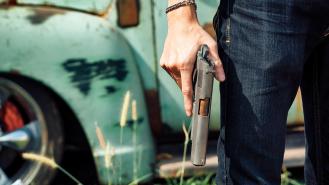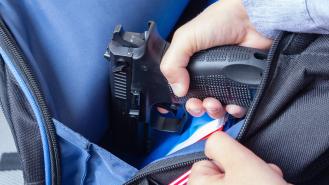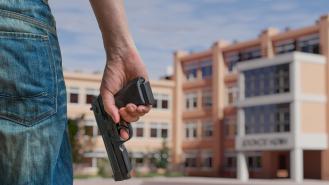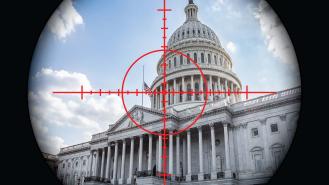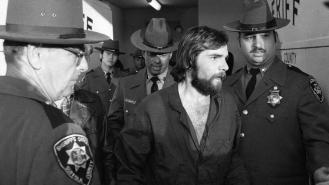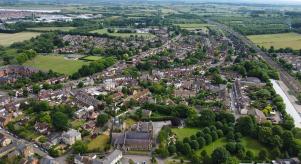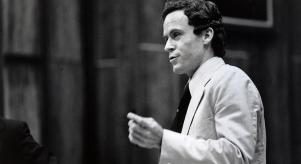
47 minutes of horror: The Columbine massacre
On the 20th of April, 1999, teenagers Eric Harris and Dylan Klebold opened fire at Columbine High School, a suburban school in Columbine, Colorado, around 15 miles south of Denver. They killed 12 students and one teacher before turning their guns on themselves. At the time, it was the worst school shooting in U.S. history and would spur a national debate on gun violence. While over two decades have passed since the school shooting, and more deadly school shootings have occurred, the word ‘Columbine’ still remains synonymous with school violence.
On that fateful morning, 18-year-old Eric Harris donned a black trench coat and a white T-shirt which had the words ‘Natural Selection’ written on the front. He carried a 9mm Hi-Point semiautomatic carbine on a strap hidden beneath his coat. He had also brought along a sawed-off 12-gauge Savage-Springfield pump shotgun in a duffel bag. 17-year-old Dylan Klebold dressed in cargo pants, a black T-shirt with the word ‘Wrath’ written on the front and a black trench coat. Hidden underneath his coat was an Intratec TEC-DC9 semiautomatic handgun which was attached to a strap which had been slung over his shoulder. In the large pockets of Klebold’s cargo pants, he had partially hidden a sawed-off, double-barrelled 12-gauge Stevens shotgun (The Denver Post, 16 May, 2000 – ‘2 Propane Bombs Could Have Killed or Maimed 500’). They had also carried four knives between them and were sharing a pair of gloves; Harris wore the right hand while Klebold wore the left hand. Outside of the school, Harris came across Brooks Brown, a classmate, and warned him: ‘Brooks, I like you. Go home.’ who recalled the incident in his book No Easy Answers.
Harris and Klebold planted two homemade propane bombs in the cafeteria and had timed them so that they would detonate during the 'A' lunch shift, which they knew would be the busiest. They had anticipated that the bombs would kill around 500 students inside the cafeteria and had planned on positioning themselves in the car park armed with their semiautomatic rifles. From this vantage point, they had hoped to open fire on the survivors as they came swarming from the fire exits of the cafeteria. Harris and Klebold had envisioned a massacre which was on par with the Oklahoma City bombing. However, Harris and Klebold’s bombs failed to detonate and their plan changed. Instead of perpetrating the shooting from outside of the school, the duo decided instead that they would need to enter the school and unleash their attack.
Rachel Scott was shot and killed on the grass at the west entrance to the school. Her friend, Richard Castaldo, was seriously injured but would survive the shooting. Harris and Klebold then started shooting down the stairs behind them towards students who were walking in the direction of an area in Clement Park, where students would go to smoke. They shot Daniel Rohrbough, killing him instantly, before shooting and injuring Sean Graves and Lance Kirklin. Klebold then walked down the stairs towards Kirklin who begged for help. Klebold responded with: ‘Sure, I’ll help you,’ and then shot Kirklin once again in the face at close-range (The Denver Post, 13 June, 1999 – ‘Through the Eyes of the Survivors’). While gravely injured, Kirklin would survive the shooting. Meanwhile, Harris shot down the stairs in the direction of other students.
From here, they then threw pipe bombs onto the grassy area outside the school and onto the roof of the school before entering the building. By this point, it was evident that the school was under attack and Sheriff’s Deputy Neil Gardner, who was the school’s resource officer, was informed that he was needed in the back lot. In the cafeteria, Dave Sanders, who was a teacher and a coach, told students to get down under the tables as Harris was shooting through the west doors. Sanders then attempted to secure as much of the school as possible. Sheriff’s Deputy Gardner took cover behind his patrol vehicle in the school’s parking lot as Harris began to shoot at him. Harris shot ten rounds before the weapon jammed while Sheriff’s Deputy Gardner shot five rounds back at Harris who swiftly retreated into the building.
Many students inside the school watched the shooting unfold outside and fled upstairs to the second level of the school. Sanders directed as many students as possible down the hall to the exit on the east side of the school. Once inside the school building, chaos ensued. Harris and Klebold fired indiscriminately at anybody they saw. While Sanders had ample opportunity to escape from the school building himself, he opted to remain inside to try and rescue as many students as he could. By this point, Harris and Klebold were both inside the main hallway. Sanders rushed to the school’s library and gestured for the students who were hiding to stay put. While here, he encountered Klebold and Harris. He turned around in an attempt to flee but was shot in the neck and back by Klebold (Comprehending Columbine by Ralph W. Larkin).
Klebold and Harris then threw bombs into the school’s hall and over the stairway railing into the cafeteria below before entering the school’s library, where 52 students, two teachers and two librarians were hiding, at around 11:29am. It was here that ten students were shot and killed by Klebold and Harris. They were: Kyle Valasquez, Steven Curnow, Cassie Bernall, Isaiah Shoels, Matthew Kechter, Lauren Townsend, John Tomlin, Kelly Fleming, Daniel Mauser, and Corey DePooter.
From here, Harris and Klebold walked to various other locations inside the school, shooting into empty classrooms and throwing more bombs. When they left the library, the survivors made a break for it. Shortly thereafter, at around 12:08pm, Harris and Klebold returned to the library and took their own lives. Harris had fired his shotgun 25 times, 21 of which were fired in the library. He had fired his carbine 96 times, 13 of which were fired in the library. Klebold had fired his shotgun 12 times, 6 of which were fired in the library. He had fired his TEC-DC9 55 times, 21 of which were fired in the library.
As the first responding officers arrived on the scene, they were met with a scene of chaos. Injured and deceased students were dotted outside the school while traumatised students were cowering behind vehicles. In the chaos, there were dozens of conflicting reports about who the killers were, how many of them there were, and where they were. Some students even thought that a hostage situation was taking place.
Jefferson County Sheriff’s Deputies struggled to coordinate a rescue and a number waited outside the school for help. By the time the first SWAT team entered Columbine High School to search for Harris and Klebold, the massacre was already over. It took them three hours and 58 minutes to finally enter the school and find the victims as well as the deceased shooters. It wouldn’t be until 4:45pm, almost five hours after the final shots, that the victims inside the school were pronounced dead (Rocky Mountain News, 16 May, 2000 – ‘Columbine Timeline – The Final Sheriff’s Report’).
In the aftermath of the shooting, the media would scramble to uncover more about the two teenage killers and fact gave way to sensationalism and hearsay.
Many traumatized students told the media that Harris and Klebold were members of a group in the school known as the Trench Coat Mafia. An article from The Washington Post read: ‘The shooters who turned Columbine High School into an unspeakable landscape of carnage yesterday were members of a small clique of outcasts who always wore black trench coats and spent their entire adolescence deep inside the morose subculture of Gothic fantasy, their fellow students said’ (The Washington Post, 21 April, 1999 – ‘Gunmen Recalled as Outcasts’).
However, this was just one of many fabrications posted by the media. Investigators would uncover that Harris and Klebold were not integral members of the group (St. Paul Pioneer Press, 20 April, 2019 – ‘Some Myths of Columbine Massacre Linger’).
There was also much speculation that the duo were loners and outcasts but taking a look at their lives however as noted in Columbine by Dave Cullen, it was evident that they had a group of close friends, they both partook in activities out of school, they both dated and both worked part-time at Blackjack Pizza. Much of the media also perpetuated the myth that the attack had been revenge for being bullied. Early articles in the immediate aftermath of the shooting indicated that Harris and Klebold had targeted those who they felt had slighted them and made their school experience unbearable. However, the two teenagers had heavily documented their murderous plans as well as their personal thoughts in video recordings and in journals which were revealed in the Columbine Report by the Jefferson County Sheriff’s Office. These video recordings and writings would paint a much more complex portrait of the duo. While they had been teased and taunted on occasion, they themselves had teased and taunted others and displayed racist, homophobic, ableist, anti-semitic and misogynistic ideologies.
Another infamous rumour that spread like wildfire was that Cassie Bernall, an evangelical Christian, had been asked at gunpoint if she believed in God. When she answered yes, Harris shot her in the head. This rumour would launch Bernall into martyrdom, inspire dozens of sermons and even lead to a best-selling book written by her mother. However, it would later be revealed that it wasn’t Bernall who had said this. It was another girl, Valeen Schnurr, who had been shot but survived.
The fallout from the Columbine Massacre was immediate and it was all-consuming and terrifying. As the world struggled to come to terms with what had happened, many seemingly found comfort in believing that the murders had been targeted but in fact, the victims had been chosen at random. Harris and Klebold had killed anybody who crossed their path and according to survivors, they took pleasure in what they were doing; they laughed as they pulled the trigger and even taunted their victims.
Witnesses heard the shooters exclaim things such as: ‘I’ve always wanted to do this,’ and ‘Today the world’s coming to an end!’ Months of preparation had gone into the massacre and if Harris and Klebold had succeeded in their original plan then the victim count would have been alarmingly higher; they had hoped to kill over 500 people and destroy the school.
The Columbine Massacre would lead to calls for stricter gun control in the United States. The investigation would uncover that Robyn Anderson, a friend of Harris and Klebold, had purchased the guns for them from private sellers at gun shows because she was 18-years-old at the time while Harris and Klebold were just 17. All Anderson needed to do was show her driver’s license and was not subjected to a background check. ‘It was too easy…’ she said (USA Today, 28 January, 2000 – ‘Law Let Me Buy Guns for Them’). Just the year after the shooting, legislation was introduced which required safety locks on firearms as well as the banning of importation of high-capacity ammunition magazines. There was a loophole that allowed people to purchase guns at gun shows without having a background check and Senator Frank Lautenberg introduced a proposal to close the gun show loophole in federal law. While it was passed in the Senate, it did not pass in the House (The New York Times, 12 February, 2000 – ‘Colorado Panel Defeats Move to Close a Gun-Show Loophole’).
At one point in history, school shootings were unthinkable. Since then, however, school shootings have become part of the American political narrative and school security has become a multibillion-dollar industry with the introduction of specialized doors, advanced surveillance footage, metal detectors and even bulletproof backpacks. In the aftermath, Harris and Klebold would garner a cult-like following, mainly teenage outcasts who felt as though they could somehow relate to the duo.
The images of the infamous Columbine Massacre were seared into the American psyche as they unfolded live on television. The nation recoiled in horror as distressing footage was shown of teenagers running from the school building screaming for help, injured teenagers being pulled from windows and lifeless bodies strewn on the grass. Graphic photographs of the deceased shooters would eventually make their way into the media, further compounding the horror of what had unfolded. While there had been school shootings before Columbine and many after, it was Columbine that completely shattered the sanctity and safety of school.
